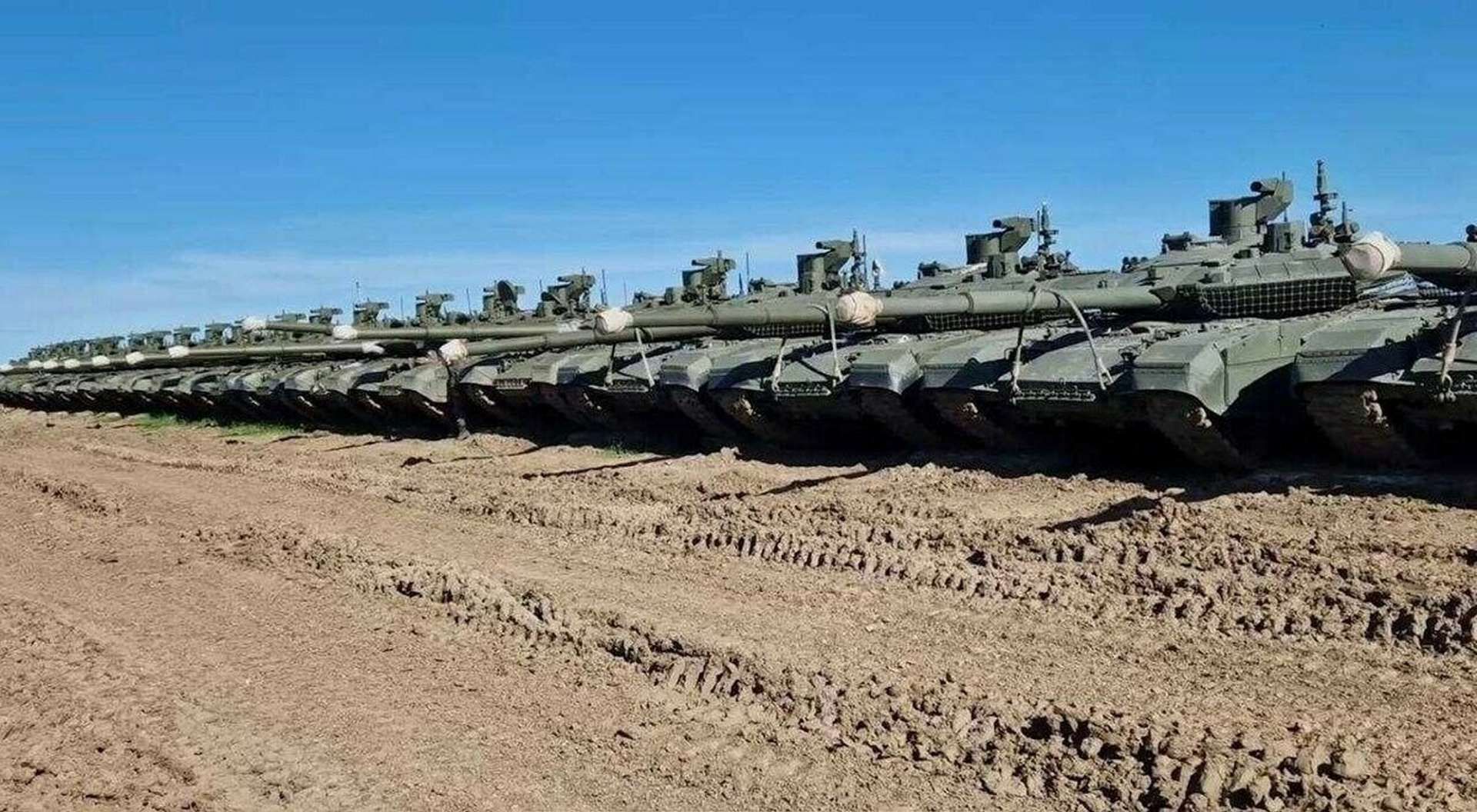Breaking news
Russian Defense Ministry deploys 23 new T-90M Proryv-3 main battle tanks in Central District.
On May 15, 2024, the Russian Ministry of Defense announced the induction of 23 T-90M Proryv main battle tanks into service with the motorized rifle formation of the combined arms army of the Central Military District (CMD). The CMD, formed in 2010, is Russia's largest and most populous military district, regrouping two Russian combined arms armies, an Air Force and Air Defense command, and various other units.
Follow Army Recognition on Google News at this link

While the T-90M is one of the most advanced tanks in Russia's arsenal, its deployment in the Ukraine conflict has shown mixed results. (Picture source: Russian social media)
The Central Military District was officially formed on October 21, 2010, as part of a significant restructuring aimed at updating the Armed Forces of the Russian Federation. This restructuring was formalized by Presidential Decree No. 1144, signed on September 20, 2010, and involved the amalgamation of the Volga-Ural Military District and the western portion of the Siberian Military District. Since its inception, the CMD has been an important component of Russia's military framework, encompassing two combined arms armies, an Air Force and Air Defense Command, and various other units stationed within the district. Additionally, the 201st military base in Tajikistan falls under the jurisdiction of the USC Center, which is subordinate to the CMD.
Covering a vast area, the Central Military District is the largest military district in Russia by geographic size, spanning 7,060,000 square kilometers (approximately 2,730,000 square miles), which constitutes about 40% of the country's territory. It is also the most populous military district, home to 54.9 million people, or 39% of Russia's population. The CMD's jurisdiction includes 29 of Russia's 85 federal subjects, such as Altai Krai, Bashkortostan, Chelyabinsk Oblast, and Tatarstan, among others. Headquartered in Yekaterinburg, the district has been under the command of Lieutenant-General Andrey Mordvichev since February 17, 2023.
The Central Military District possesses a substantial array of military equipment, reflecting its role within the Russian Armed Forces. The district includes significant ground forces, with key units such as the 2nd Guards Combined Arms Army and the 41st Combined Arms Army. Within these formations, notable equipment includes hundreds of tanks, particularly T-72 models. For example, the 41st Combined Arms Army recently mobilized equipment including T-72BM and T-72B1 main battle tanks for deployment near the Ukrainian border. Additionally, the CMD's 90th Guards Tank Division has been equipped with the latest T-90M Proryv tanks and is also set to receive BMPT "Terminator" tank support combat vehicles, enhancing its firepower and operational capabilities. Furthermore, the district's 201st Military Base in Tajikistan has been upgraded with T-72B3M tanks, man-portable air-defense systems, and other modern equipment.

These 23 T-90M Proryv main battle tanks will join Russia's Central Military District (CMD), its largest and most populous military district, regrouping two Russian combined arms armies, an Air Force and Air Defense command, and various other units. (Picture source: Russian MoD)
The Russian T-90M Proryv-3 is the most advanced iteration of the T-90 main battle tank series, incorporating several improvements over its predecessors. It features a 125mm 2A46M-4 smoothbore main gun, capable of firing both conventional munitions and the 9M119 Refleks anti-tank guided missiles, which can engage targets up to 5 kilometers away. Additionally, the T-90M is equipped with a modern automated digital fire control system that significantly improves its target acquisition, tracking, and engagement capabilities.
Protection is a key focus of the T-90M, which employs the Relikt explosive reactive armor (ERA), offering defense against modern anti-tank weapons, including those with tandem warheads, compared to the older Kontakt-5 ERA used in previous T-90 variants. The tank also includes an active protection system that can automatically deploy smoke grenades triggered by laser targeting, helping to obscure the tank from enemy fire and increase its battlefield survivability. This combination of reactive and active protection systems aims to make the T-90M resilient against a wide range of threats, including armor-piercing fin-stabilized discarding sabot (APFSDS) rounds.
However, the T-90M's performance in combat has shown mixed results. While it is one of the most advanced tanks in Russia's arsenal, its deployment in the Ukraine conflict has highlighted some vulnerabilities. Numerous T-90M tanks have been destroyed or captured, often by Western-supplied systems used by Ukrainian forces such as the FGM-148 Javelin anti-tank guided missile (ATGM) and M142 HIMARS rocket launcher. These setbacks include a notable neutralization by a Bradley M2A2 infantry fighting vehicle (IFV) in Ukraine. Despite these issues, the T-90M remains a significant component of Russia's armored capabilities, representing a notable upgrade compared to earlier Russian main battle tanks.


























